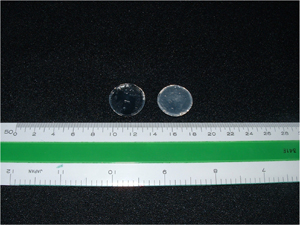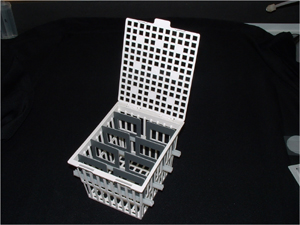Superfund Research Program
Our ability to assess the potential risks of environmental contamination is often compromised by a poor understanding of the transport, chemical cycling, and fate of contaminants in the environment. These environmental factors can alter the chemical form of contaminants, thus altering their bioavailability and subsequent risks to both human and ecological receptors. Even if we understand the effects of chemical cycling on contaminant form and bioavailability, we often lack the analytical tools to measure specific bioavailable forms of concern. Dr. James Shine at the Harvard School of Public Health SRP is working to design and validate analytical tools that provide appropriate data on the chemical form of contaminants allowing for assessment of their bioavailability and subsequent risks.

The free ions of heavy metals (i.e., those not complexed with particulate matter or dissolved organic matter) are the key determinant predicting metal distribution among different phases, including uptake by biological organisms. Typical methods used to determine free metal ion concentrations can determine speciation for only one metal at a time, are labor intensive, and/or require sophisticated equipment. Researchers in Dr. Shine's laboratory have developed and tested a passive sampling device, called the "Gellyfish", that can simultaneously determine the free metal ion concentration of multiple metals. The Gellyfish consists of a coin-sized piece of polyacrylamide gel embedded with cation exchange beads and is constructed so that the competitive metal interactions governing metal uptake by the Gellyfish are the same as the interactions governing uptake by biological organisms. Field application of the Gellyfish is simpler than research conducted with animals because Gellyfish don't die, get eaten, or undergo gametogenesis during the test period. In addition, unlike test animals, Gellyfish are all the same, reducing the confounding influences such as age, size, and diet that are inherent in research with animals.

Dr. Shine conducted field trials to evaluate the performance of the Gellyfish. He placed Gellyfish and caged mussels (Mytilus edulis) in four areas of the Boston Harbor for 100 days and compared concentrations of free ions of copper, lead, nickel, and zinc derived from Gellyfish to those measured in the mussels. The Gellyfish results were repeatable and consistent with the results from the mussels as well as those reported in other studies.
This sampler is a significant advance in the area of metal bioavailability research, as it will allow one to conduct studies examining antagonistic and synergistic interactions of metal species in complex mixtures. This will greatly enhance our ability to estimate the potential fate and effects of heavy metals in the environment.


